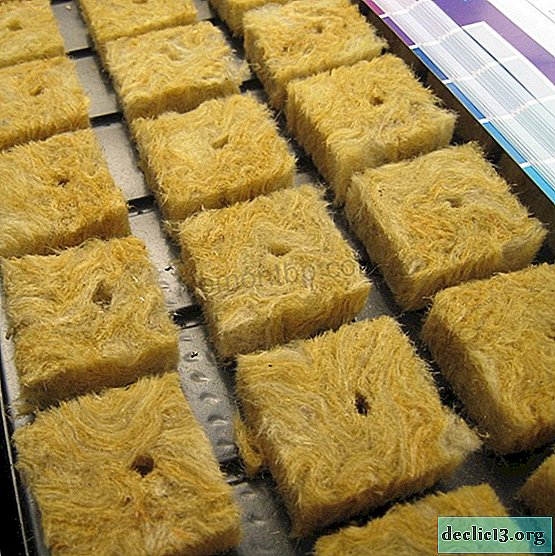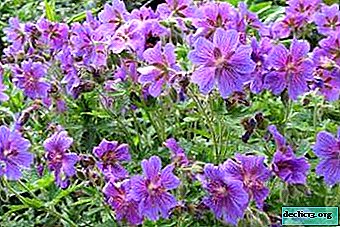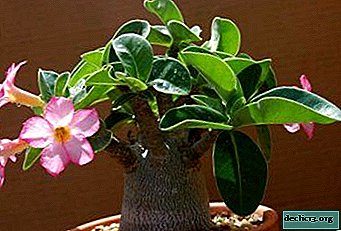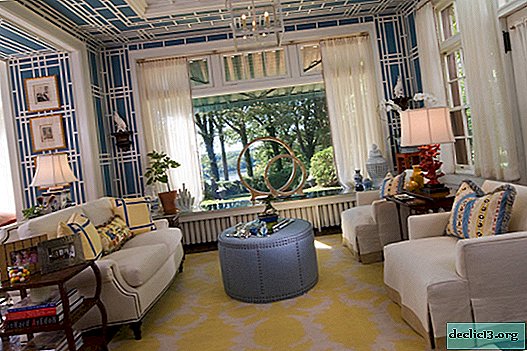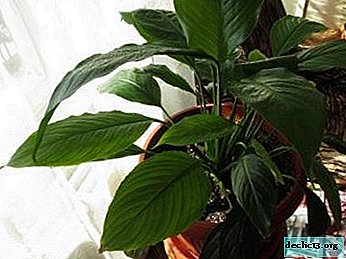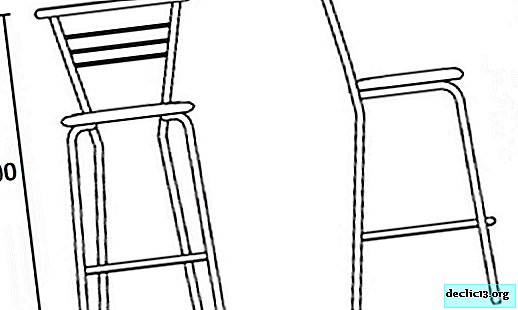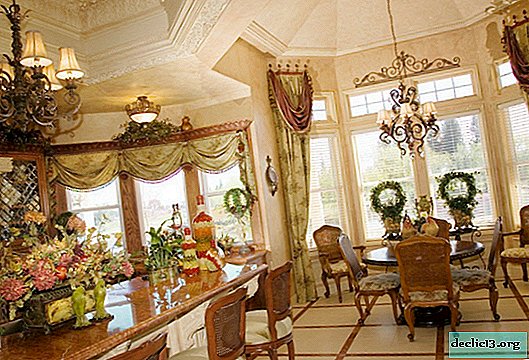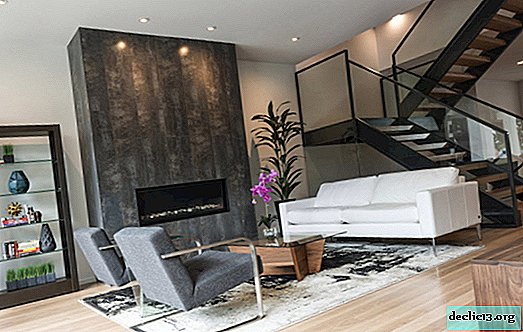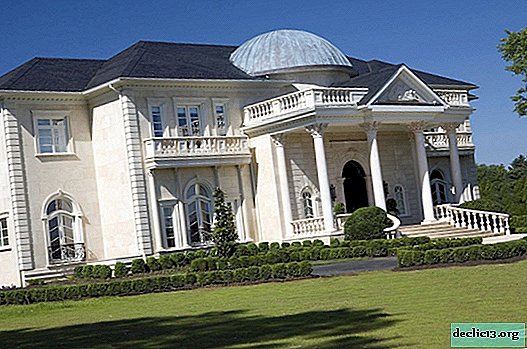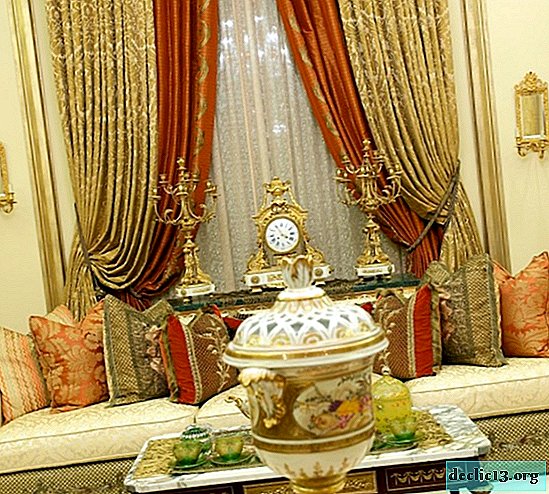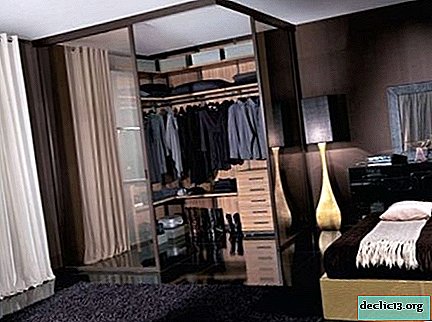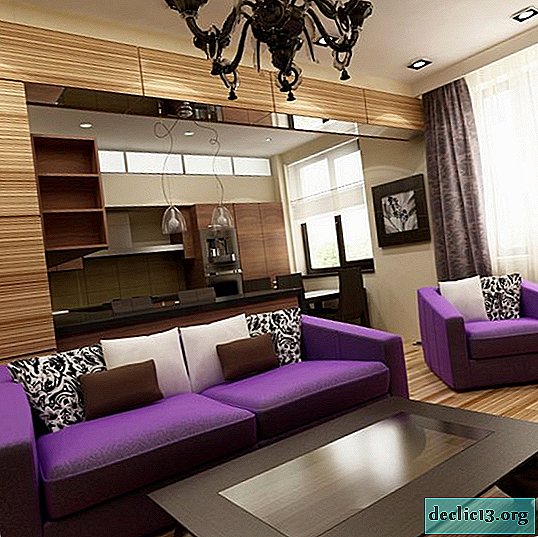Flower to Envy of Guests - Royal Begonia
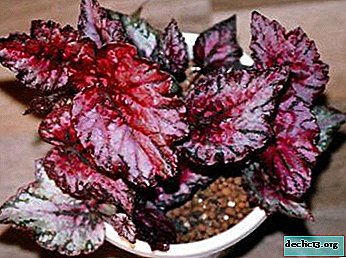
Despite the huge variety of varieties and species of plants of the genus Begonia, the Royal is considered to be unrivaled by right. Its second name is begonia Rex.
This flower is the owner of a chic, dense, succulent foliage, with characteristic shapes and shades. Selectors and gardeners value the royal begonia for its decorativeness, not the beauty of the flowers.
This article provides all the basic information about the royal begonia.
History and description of the plant
In 1956, at a London auction dedicated to Asian orchids, a new flower was opened - Royal Begonia. And three years later, breeders bred several more subspecies of the plant. Since then, active work has begun to create the latest hybrid varieties.
As a whole, Asian species were used for crossing. In the process of selection, numerous types of flowers were developed, differing in the shape and colors of the leaves. As for inflorescences, they are small and do not carry decorative qualities. King begonia is considered a perennial plant with a thick creeping rhizome.
Leaves of various shapes on long cuttings form a bush up to 50 cm high. On top, the foliage is velvety, asymmetrical, with different patterns.
Photo
Check out the photo of how begonia blooms:





Common varieties
As a result of many years of selection and crossing of various classes of plants, as a result, a huge number of hybrids were obtained. The most common varieties of royal begonia are considered:
- African jungle.
- Charm.
- Black Fang.
- Merry Christmas.
- Iron Cross.
- Mikado
- Vesuvius.
- Daemon.
- Madame Ponpadour.
Location and Lighting
Varieties of decorative and deciduous begonias have a rich, vibrant color of foliage that needs intense light. With a lack of lighting, the leaves turn pale, dry. But direct sunlight is also detrimental to royal begonias.
In summer, it is better to shade the sun, and place the plant on window sills on the east and west sides. In autumn, the indoor flower should be rearranged to the south.The most comfortable location - partial shade. Light should not fall on the plant solely on one side. In this case, the begonia crown will be one-sided, inclined to the window. This becomes especially noticeable when daylight hours and flower growth rates increase. Do not forget to turn the pot every week.
Recommended soil
The soil for royal begonia should be loose, soft, enriched with minerals, with a neutral pH. Such a composition is created by a mixture of river sand, peat, sheet land, clay. The soil may also contain pine bark, which acidifies and loosens the soil. Land from beds or pure peat does not fit. The best option is to buy ready-made soil. Before planting, any soil needs to be warmed up and slightly moistened with standing warm water.
Planting and rejuvenation
 Every year, a room flower needs a transplant. Do it in the early spring. To do this, they select a flowerpot in diameter larger than the previous one, but not deep, so that liquid stagnation does not occur.
Every year, a room flower needs a transplant. Do it in the early spring. To do this, they select a flowerpot in diameter larger than the previous one, but not deep, so that liquid stagnation does not occur.
The maximum pot size is 9-10 cm in diameter. It is necessary to ensure that the roots of the plant are 2-4 cm from the surface of the soil. Every 4 years begonia requires rejuvenation. This is due to the fact that the flower loses its shape, the bush decays, leaves and inflorescences are reduced in size.
In place of the old cuttings, a new one is planted in previously prepared soil. Pay attention to the presence of drainage in the pot. An unusual composition will be if you plant several varieties of royal begonia in one pot.
Basic care
In nature, royal begonia grows in the tropics, where it is humid and hot. The plant is not demanding, but it is worth paying attention to some nuances of care:
- A comfortable temperature regime is considered to be +20 to + 24 ° С, in the cold season not lower than + 16 ° С. Regular air exchange is required, but do not leave the flower in a draft. Temperature differences can adversely affect its condition.
- Begonia prefers cool rooms with moist air. Humidity in the room varies between 50-70%. Large flower leaves have a significant evaporation area, while the root system is not able to compensate for the lost moisture. In winter, do not leave the plant on the windowsill. From a cold window, the roots are not comfortable, they do not receive enough nutrition. And the leaves, on the contrary, dry out from the jet of hot stream coming from the batteries.
- Royal begonia should be watered generously, 1-2 times a week. In the heat it is better to moisturize daily. But be sure that the liquid does not stagnate in the pot, otherwise it is possible to rot the root system. Sometimes they try to compensate for moisture with plentiful watering, which should not be done. Use only soft water, preferably acidified, with the addition of lemon juice. Do not allow moisture to get on the leaves. In winter, watering is minimal.
- Royal begonia should be fed in the summer and spring. The procedure is performed 1 time per week, preferably with mineral fertilizers, with equal proportions of K, Ca, R.In winter, you do not need to feed, the plant is at rest.
- Before the start of the active growth phase, approximately February-March, pinch the tips of the begonia, new shoots are sent to the rhizome. They do this in order to form a beautiful crown shape, stimulating young shoots to develop.
Common diseases
Royal begonia, like other indoor plants, is susceptible to disease. The main reason for this is a violation of the correct indoor climate. Deviations from the parameters can lead to the development of such diseases:
- Powdery Mildew A fungal disease of indoor flowers, due to which a white coating appears on the surface of the leaves. With the spread of the fungus, yellowish spots appear, round in shape. They are visible on the lumen or on the back of the leaves. Powdery mildew develops in conditions of high humidity and lack of ventilation. To combat this ailment should be by spraying with fungicide or sulfur.
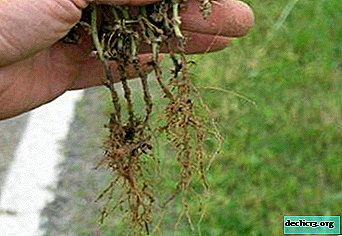 Rot of the root system. The disease develops due to an excess of moisture in the soil and a low temperature in the room. Initially, the roots of the plant are damaged. This disease also spreads to the leaves, they twist, and the stems undergo a process of decay. You can get rid of begonia from a similar problem by removing damaged areas and treating with a fungicide solution.
Rot of the root system. The disease develops due to an excess of moisture in the soil and a low temperature in the room. Initially, the roots of the plant are damaged. This disease also spreads to the leaves, they twist, and the stems undergo a process of decay. You can get rid of begonia from a similar problem by removing damaged areas and treating with a fungicide solution.
With improper care, royal begonia often suffers:
- The pale, light color of the leaves is an excess of sunlight.
- Thin, elongated foliage - lack of plant lighting.
- The dried edges of the leaves - lack of moisture.
To prevent this from happening, regularly take preventative measures: loosening the soil, timely proper watering, airing, optimal lighting, comfortable humidity and temperature.
Pests
Pest insects enter the house with land, flowers, unwashed fruits, vegetables.
- Aphid. She eats the juice of the plant, which leads to deformation of the leaves. This pest is fought with the help of processing infusion of celandine, onion broth.
- Spider mite. Located on the bottom of the sheet. Prefers also young shoots. The appearance of the tick is indicated by pallor, falling leaves. Likes a spider web pest to a dry indoor environment. For destruction, a soap solution is used.
- Thrips. Small flying pests. Signs of their presence on begonias: dark brown spots on the leaves, which are distributed along the edges or in the center. Subsequently, the leaf turns yellow and dies. In this case, urgent treatment of begonias with an insecticide solution is necessary.
As a precaution against bad insects, it is important to wipe the begonia leaves from dust and dirt with a dry cloth. Inspect the plant at least 2 times a month.
If the flower is seriously damaged, they are treated with insecticides. For example, the drug "Aktara", dilute 1 g per liter of liquid.Breeding
The basic principles of begonia breeding are seeds, cuttings or root division:
- Seeds are sown at the end of winter in a tank with drainage. Pots with future seedlings should be in greenhouse conditions. After 2-3 weeks, the first shoots appear. The first leaves will be green in color, over time they will acquire a color corresponding to the variety.
- Vegetative way. For breeding, it is important to take a healthy, strong parent element. You can take the stalk, leaf, part of the leaf. Cut leaves can be put in water, or placed in moist soil until the roots appear. Especially the process occurs quickly if growth stimulants are used. Preparations such as "Kornevin", "Zircon". It is also important to create a greenhouse effect for plants.
- The division of rhizomes is carried out during the period of planting or transplanting a plant. Part of the root is planted in a previously prepared soil mixture. Leave in a room with a temperature of + 20-24 ° C. After a couple of weeks, young sprouts hatch.
It is believed that royal begonia brings harmony to the house. The best place for her is the living room. Various energy gathers here, with the arrival of guests. The plant is able to neutralize all negative, and recreate a favorable atmosphere.

 Rot of the root system. The disease develops due to an excess of moisture in the soil and a low temperature in the room. Initially, the roots of the plant are damaged. This disease also spreads to the leaves, they twist, and the stems undergo a process of decay. You can get rid of begonia from a similar problem by removing damaged areas and treating with a fungicide solution.
Rot of the root system. The disease develops due to an excess of moisture in the soil and a low temperature in the room. Initially, the roots of the plant are damaged. This disease also spreads to the leaves, they twist, and the stems undergo a process of decay. You can get rid of begonia from a similar problem by removing damaged areas and treating with a fungicide solution.
